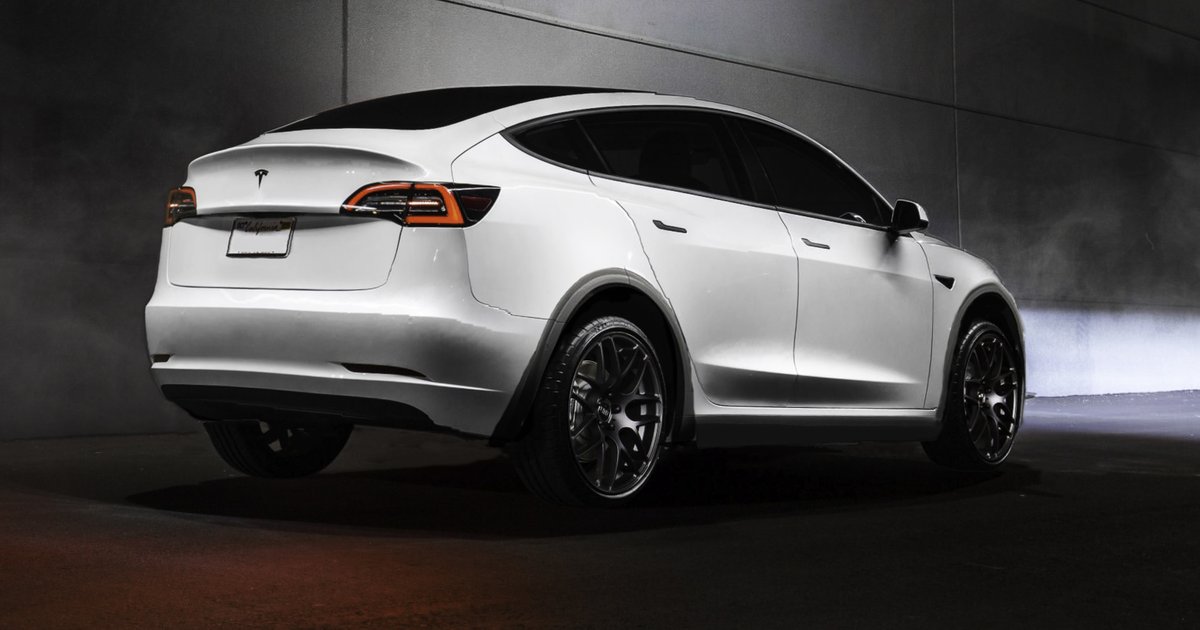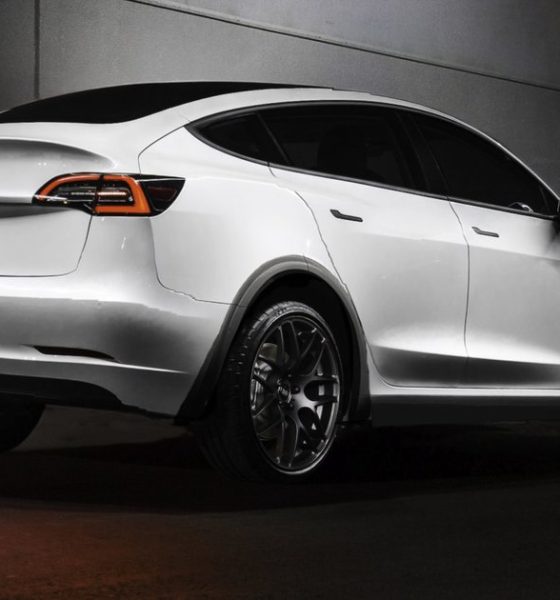

News
Tesla community weighs in on Elon Musk’s upcoming “Tesla news”
Tesla CEO Elon Musk’s recent tease of an upcoming announcement has the community guessing on what the “Tesla news” could be about.
Taking to Twitter shortly before midnight Pacific time on Wednesday, Musk posted a series of cryptic tweets, leading with an ambiguous call out to “Thursday 2 pm.” As the Tesla and SpaceX community, and his legion of 25 million followers, began to speculate on what the tweet might be about – perhaps a dig at the shortseller enrichment commission – Musk followed it up with two more posts confirming an upcoming Tesla announcement.
Thursday 2pm
— Elon Musk (@elonmusk) February 27, 2019
Some Tesla news
— Elon Musk (@elonmusk) February 27, 2019
The Tesla community was abuzz following Musk’s confirmation of Thursday’s upcoming “Tesla news” at 2 pm California. A number of Tesla owners within the community were hopeful that an upcoming Supercharger upgrade would be revealed, while some fans and would-be buyers of Tesla’s upcoming all-electric compact SUV saw Musk’s tweet as a sign of a Model Y reveal event. Others were speculating that Tesla might provide an update on the Hardware 3 upgrade, which will bring Full Self-Driving closer to reality.
Though all guesses are up for speculation, Twitter users polled by Teslarati indicate that the vast majority of people believe Musk will make an announcement related to the Model Y SUV. Musk has hinted at the Model Y several times over the past year, mentioning in the Q3 2018 earnings call that he had approved the production of the all-electric SUV’s prototype. More recently, Musk stated that Tesla would start tooling for Model Y sometime this year, achieving volume production for the vehicle by the end of 2020. Musk also mentioned that the SUV would likely be produced at Gigafactory 1 in Nevada.
POLL: Elon Musk's "#Tesla news" on Thursday at 2pm (PST) is related to …
— TESLARATI (@Teslarati) February 27, 2019
Tesla has kept the Model Y’s reveal date under wraps, though Elon Musk noted last year that the SUV will be revealed on March 15, 2019. Not long after his announcement, Musk clarified that he only gave the March 15 date as a lighthearted reference to Julius Caesar’s “Ides of March.” Nevertheless, with Model 3 production hitting its stride, the time might finally be right for Tesla to unveil its next big project.
It should be noted that the Model Y is expected to be an even bigger project than the Model 3. Musk has stated that the vehicle, which will compete in the popular SUV market, can see a demand of up to 1 million units per year. Pricing for the Model Y is yet to be announced, though speculations are high that it would be priced above the Model 3. Just like the Model 3, affordable versions of the Model Y will be built on Gigafactory 3 for the local Chinese market.

Elon Musk
Elon Musk confirms xAI’s purchase of five 380 MW natural gas turbines
The deal, which was confirmed by Musk on X, highlights xAI’s effort to aggressively scale its operations.

xAI, Elon Musk’s artificial intelligence startup, has purchased five additional 380 MW natural gas turbines from South Korea’s Doosan Enerbility to power its growing supercomputer clusters.
The deal, which was confirmed by Musk on X, highlights xAI’s effort to aggressively scale its operations.
xAI’s turbine deal details
News of xAI’s new turbines was shared on social media platform X, with user @SemiAnalysis_ stating that the turbines were produced by South Korea’s Doosan Enerbility. As noted in an Asian Business Daily report, Doosan Enerbility announced last October that it signed a contract to supply two 380 MW gas turbines for a major U.S. tech company. Doosan later noted in December that it secured an order for three more 380 MW gas turbines.
As per the X user, the gas turbines would power an additional 600,000+ GB200 NVL72 equivalent size cluster. This should make xAI’s facilities among the largest in the world. In a reply, Elon Musk confirmed that xAI did purchase the turbines. “True,” Musk wrote in a post on X.
xAI’s ambitions
Recent reports have indicated that xAI closed an upsized $20 billion Series E funding round, exceeding the initial $15 billion target to fuel rapid infrastructure scaling and AI product development. The funding, as per the AI startup, “will accelerate our world-leading infrastructure buildout, enable the rapid development and deployment of transformative AI products.”
The company also teased the rollout of its upcoming frontier AI model. “Looking ahead, Grok 5 is currently in training, and we are focused on launching innovative new consumer and enterprise products that harness the power of Grok, Colossus, and 𝕏 to transform how we live, work, and play,” xAI wrote in a post on its website.
Elon Musk
Elon Musk’s xAI closes upsized $20B Series E funding round
xAI announced the investment round in a post on its official website.

xAI has closed an upsized $20 billion Series E funding round, exceeding the initial $15 billion target to fuel rapid infrastructure scaling and AI product development.
xAI announced the investment round in a post on its official website.
A $20 billion Series E round
As noted by the artificial intelligence startup in its post, the Series E funding round attracted a diverse group of investors, including Valor Equity Partners, Stepstone Group, Fidelity Management & Research Company, Qatar Investment Authority, MGX, and Baron Capital Group, among others.
Strategic partners NVIDIA and Cisco Investments also continued support for building the world’s largest GPU clusters.
As xAI stated, “This financing will accelerate our world-leading infrastructure buildout, enable the rapid development and deployment of transformative AI products reaching billions of users, and fuel groundbreaking research advancing xAI’s core mission: Understanding the Universe.”
xAI’s core mission
Th Series E funding builds on xAI’s previous rounds, powering Grok advancements and massive compute expansions like the Memphis supercluster. The upsized demand reflects growing recognition of xAI’s potential in frontier AI.
xAI also highlighted several of its breakthroughs in 2025, from the buildout of Colossus I and II, which ended with over 1 million H100 GPU equivalents, and the rollout of the Grok 4 Series, Grok Voice, and Grok Imagine, among others. The company also confirmed that work is already underway to train the flagship large language model’s next iteration, Grok 5.
“Looking ahead, Grok 5 is currently in training, and we are focused on launching innovative new consumer and enterprise products that harness the power of Grok, Colossus, and 𝕏 to transform how we live, work, and play,” xAI wrote.
Investor's Corner
Tesla gets price target bump, citing growing lead in self-driving

Tesla (NASDAQ: TSLA) stock received a price target update from Pierre Ferragu of Wall Street firm New Street Research, citing the company’s growing lead in self-driving and autonomy.
On Tuesday, Ferragu bumped his price target from $520 to $600, stating that the consensus from the Consumer Electronics Show in Las Vegas was that Tesla’s lead in autonomy has been sustained, is growing, and sits at a multiple-year lead over its competitors.
CES 2026 validates Tesla’s FSD strategy, but there’s a big lag for rivals: analyst
“The signal from Vegas is loud and clear,” the analyst writes. “The industry isn’t catching up to Tesla; it is actively validating Tesla’s strategy…just with a 12-year lag.”
The note shows that the company’s prowess in vehicle autonomy is being solidified by lagging competitors that claim to have the best method. The only problem is that Tesla’s Vision-based approach, which it adopted back in 2022 with the Model 3 and Model Y initially, has been proven to be more effective than competitors’ approach, which utilizes other technology, such as LiDAR and sensors.
Currently, Tesla shares are sitting at around $433, as the company’s stock price closed at $432.96 on Tuesday afternoon.
Ferragu’s consensus on Tesla shares echoes that of other Wall Street analysts who are bullish on the company’s stock and position within the AI, autonomy, and robotics sector.
Dan Ives of Wedbush wrote in a note in mid-December that he anticipates Tesla having a massive 2026, and could reach a $3 trillion valuation this year, especially with the “AI chapter” taking hold of the narrative at the company.
Ives also said that the big step in the right direction for Tesla will be initiating production of the Cybercab, as well as expanding on the Robotaxi program through the next 12 months:
“…as full-scale volume production begins with the autonomous and robotics roadmap…The company has started to test the all-important Cybercab in Austin over the past few weeks, which is an incremental step towards launching in 2026 with important volume production of Cybercabs starting in April/May, which remains the golden goose in unlocking TSLA’s AI valuation.”
Tesla analyst breaks down delivery report: ‘A step in the right direction’
Tesla has transitioned from an automaker to a full-fledged AI company, and its Robotaxi and Cybercab programs, fueled by the Full Self-Driving suite, are leading the charge moving forward. In 2026, there are major goals the company has outlined. The first is removing Safety Drivers from vehicles in Austin, Texas, one of the areas where it operates a ride-hailing service within the U.S.
Ultimately, Tesla will aim to launch a Level 5 autonomy suite to the public in the coming years.








